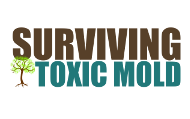Can Mold Cause Ear Infections?
 Exposure to toxic molds in an indoor environment can potentially cause ear infections. Mold spores can enter the ear canal and cause irritation or infection, leading to symptoms like pain, itching, and discharge. Prolonged exposure to mold can weaken the immune system, making individuals more susceptible to infections. While not everyone exposed to mold will develop an ear infection, those who are more sensitive to mold or have underlying health conditions may be at higher risk.
Exposure to toxic molds in an indoor environment can potentially cause ear infections. Mold spores can enter the ear canal and cause irritation or infection, leading to symptoms like pain, itching, and discharge. Prolonged exposure to mold can weaken the immune system, making individuals more susceptible to infections. While not everyone exposed to mold will develop an ear infection, those who are more sensitive to mold or have underlying health conditions may be at higher risk.
Contrary to common belief mold is in fact harmful in multiple ways. It has been linked to sinus problems, allergies, food allergy, gluten sensitivities, ear infections, breakdown of DNA, autoimmune diseases and even some cancers. The good news is that you can do something about it.
How can mold affect the inner ear?
Toxic mold exposure can have several effects on the inner ear, potentially leading to various health issues. Here are some ways it can impact the inner ear:
-
Inflammation: Mold spores and mycotoxins can cause inflammation in the inner ear, leading to symptoms such as dizziness, vertigo, and balance problems.
-
Infections: Mold exposure can increase the risk of infections in the inner ear, which may result in pain, hearing loss, and a feeling of fullness or pressure in the ear.
-
Tinnitus: Mycotoxins produced by mold can irritate the nerves in the inner ear, leading to tinnitus or ringing in the ears.
-
Autoimmune Inner Ear Disease (AIED): There is some evidence suggesting a link between mold exposure and AIED, a condition where the immune system mistakenly attacks the inner ear.
-
Ménière's Disease: Mold exposure has been associated with an increased risk of developing Ménière's disease, a chronic condition that causes severe dizziness, tinnitus, hearing loss, and a feeling of ear pressure or fullness.
If you suspect mold exposure is affecting your ear health, it's important to seek medical attention. Treatment can help alleviate symptoms and prevent complications.
Here are a few steps you can take to get started.
- Get tested for IgG allergies, Candida, and other fungi
- Get on the www.PhazeMoldDiet.com diet by staying away from sugar and gluten
- Take a good Probiotic and Candida Supplement
- Test your home for mold.
- Find moisture and eliminate the cause of the moisture.
- Lower the mold counts in your environmental air to safe levels by remediating.
- And if you have sinusitis remove the mold from your sinuses
- Dealing with mold in your sinuses can be quite challenging, but there are effective ways to address it. Here are some steps you can take:
- Nasal Irrigation: Using a saline nasal rinse can help flush out mold spores and mucus from your sinuses. Devices like neti pots or saline spray bottles can be useful. I personally have found great results using the Navage Nasal Irrigation System.
- Using the Nasal Rotation Protocol I came across for marCONS.
- Immune System Support: Strengthening your immune system through a healthy diet, regular exercise, and adequate sleep can help your body fight off infections.

 Exposure to toxic molds in an indoor environment can potentially cause ear infections. Mold spores can enter the ear canal and cause irritation or infection, leading to symptoms like pain, itching, and discharge
Exposure to toxic molds in an indoor environment can potentially cause ear infections. Mold spores can enter the ear canal and cause irritation or infection, leading to symptoms like pain, itching, and discharge



